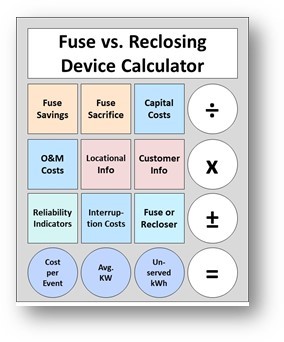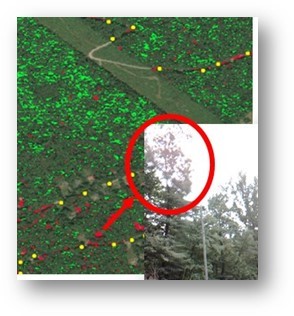Deliverables on Asset, Reliability & Resiliency Analytics
Recent deliverables on distribution asset, reliability & resiliency analytics are highlighted below.
2021

Distribution Asset Performance Analysis – Data Model and Analysis Results
focuses on leveraging data science techniques to better understand wood pole and pad mount transformer performance. To date, EPRI has curated and analyzed 3.6 million wood pole inspection records from 6 utilities and 650,000 pad mount transformer visual inspection records from 4 utilities. The report:
- Provides objective data to guide inspections, plan resources and aid compliance
- Helps better understand influence of various factors such as manufacturer, inspection type, material composition etc. on asset performance
- Guides inspection and maintenance through combining data, statistics and leading industry practices
- Guidance on inspection frequency, inspection points and data collection

Evaluation and Comparison of Costs/Benefits of Fuses vs. Reclosers v2.0
The calculator and accompanying how-to-use report permit utilities to plan for system improvements and design standards with more confidence in the expected benefits. The calculator is geared to compare the costs and benefits of installing either a fuse or recloser on a tap/lateral. The calculator accepts utility specific inputs and interruption costs and recommends which utility asset to install.

Evaluation of Speech to Text Services for Industry Specific Usecase: Distributing Outage Coding
Utilities use outage records, including the associated outage cause code to justify reliability or resiliency investment decisions. Because of their importance, most utilities implement processes to review the initial outage recording. This audit process, or “follow up,” attempts to ensure the accuracy of the cause code and update outage records in the event of any error. In this research, EPRI uses speech to text audio transcription models to automatically train and transcribe audio data of industry related terms and phrases. This report documents the performance of Google’s, Amazon’s, and Azure’s Speech-to-Text on multiple utility audio files. While results vary, the research showed that utilities can leverage transcription models to support outage collection techniques.

Identification of At-Risk Trees Using Satellite Imagery in the Western U.S.
Vegetation falling into transmission and distribution lines have the potential to damage lines and disrupt the delivery of power. Multispectral satellite imagery shows promise in the detection of at-risk trees along power line rights-of-way. This study expands previous work conducted at EPRI that evaluated the potential of satellite imagery to correctly identify stressed trees in the Eastern United States. This study extended the work initiated in 2020 by developing a method to detect both stressed and dead trees using machine learning models for the Western United States.
Three study locations were selected in California that met the following criteria:
- a high proportion of stressed and dead trees
- available satellite and aerial data
- accessible for ground-truthing the trees.
Individual tree delineation from LiDAR data produced canopy maps for certified arborists to locate and assess five hundred trees. Field assessments of trees provided training and testing data for Random Tree and Support Vector Machine models. A seven-class model with tree stress categories that included 0, 20, 40, 60, and 80% stress in addition to dead trees was tested. The tree stress model with seven classes had an accuracy of 72.5%. In an effort to improve the accuracy of tree stress detection, a simpler two-class model was tested. The two-class model included one class for trees that were stress and maintenance action was required and a second class that categorized trees as no to low levels of stress that required continued monitoring. The two-class model improved overall model accuracy to 82%. The value of this research is early detection of at-risk trees along rights-of-way that facilitates needed vegetation management and prevents damage to lines.
See 2020 Deliverables here.